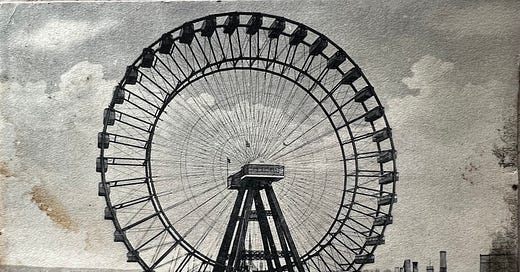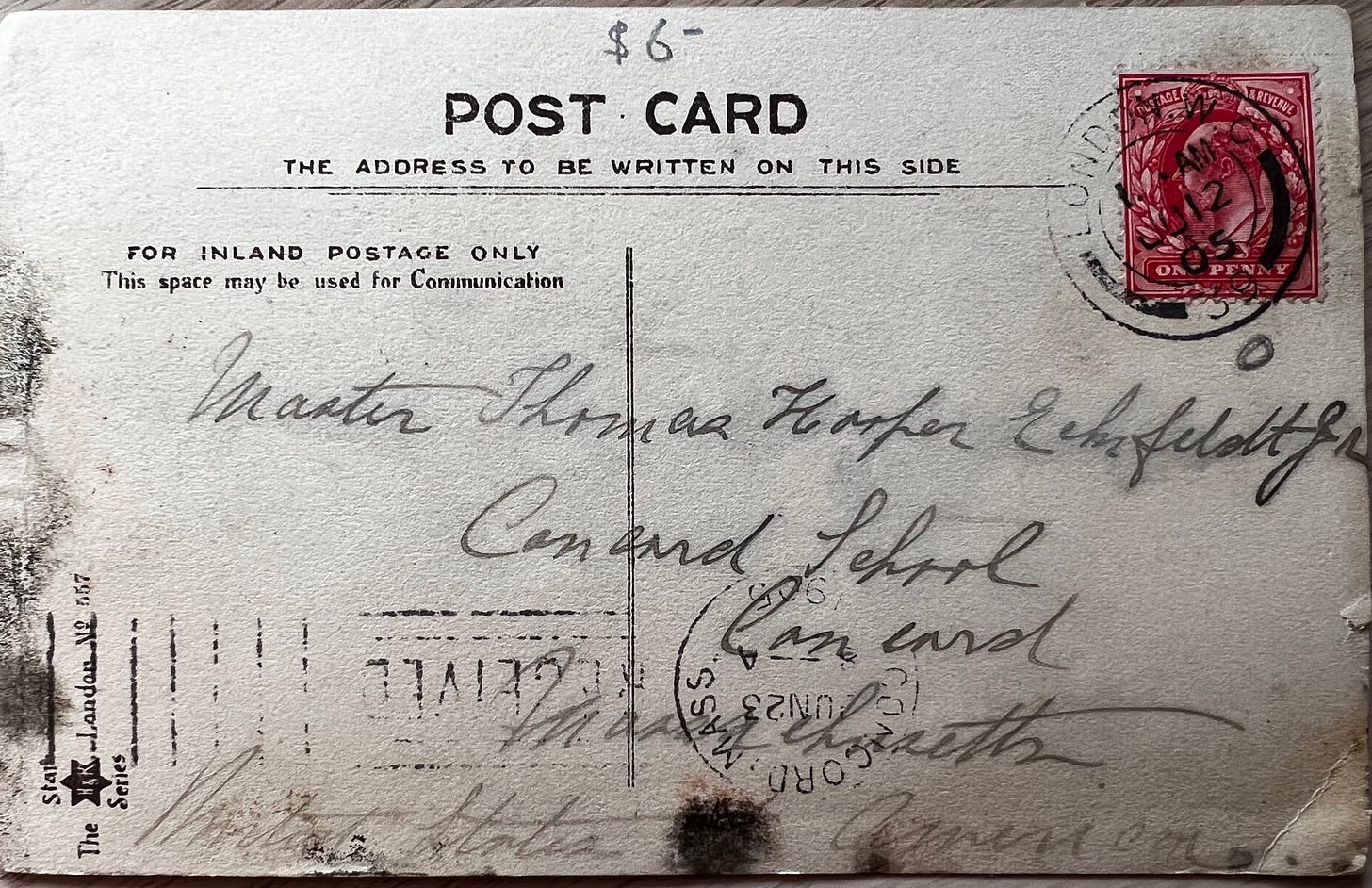The Great Wheel, also known as the Gigantic Wheel or Graydon Wheel, was built for the Empire of India Exhibition at Earls Court, London. It was constructed in March 1894 at the works of Maudslay, Sons and Field in Greenwich and opened to the public on July 17, 1895.
It was modeled on the original Ferris Wheel, which was installed at the 1893 World’s Columbian Exposition in Chicago. The Great Wheel was 94 meters (308 ft) tall and 82.3 meters (270 ft) in diameter. It was the largest wheel in the world when first constructed and the tallest structure in London other than St Paul’s Cathedral. A trip on the wheel would take about 20 minutes and cost sixpence. Its 40 cars, weighing four tons apiece, could each carry 40 people, giving it a theoretical capacity of 1,600. The Great Wheel stayed in service until 1906, by which time its 40 cars had carried over 2.5 million passengers. It was demolished in 1907 following its last use with the Imperial Austrian Exhibition of 1906 because it was not profitable
Earl's Court, where the Great Wheel sat, is a district located in the Royal Borough of Kensington and Chelsea in West London, England. It is situated approximately 3 miles west of Charing Cross, which is considered the central point of London. The area is well-known for the Earl's Court Exhibition Centre, which was a major venue for events, concerts, and exhibitions until its closure in 2014. The nearest London Underground station to Earl's Court is, unsurprisingly, Earl's Court station, which serves the District and Piccadilly lines. This excellent transport link allows for easy access to other parts of London.
This postcard was mailed from London in July of 1905 to "Master Thomas Hooper Eckfeldt, Jr., Concord School, Concord, Massachusetts, United States, America," for a one penny stamp. The postcard doesn't include a message or the sender's name. Perhaps young Thomas knew who was visiting London while he was at school?
In 1905, Thomas was nine years old. Thomas lived with his parents, an older sister and brother, three male boarders, and two female servants. Thomas's father was a teacher and in 1900 had been a school principal. In 1917 in Thomas's WWI draft card, he is shown as white, single, of medium built, though tall, with brown hair, and gray-brown eyes. He served as a Lieutenant during the war. A year later, in 1918, he marries. In his wedding announcement in the Boston Globe, Thomas is said to have graduated from Harvard in 1917 and become a member of Battery A, Boston before the war. His wife was a graduate of the Lowthrope School of Landscape at Groton. Thomas was stations at artillery school at Fort. Sill, Oklahoma. By 1940, The Eckfeldt's were living back in Massachusetts. Thomas was a clerk for a paper mill and the couple had five children—three sons and two daughters.
Thomas died in 1961 at the age of 64. His obituary said that he served in both WWI and WWII as an artillery officer. The article goes on to mention that his older brother is "Maj. Gen. Roger W. Eckfeldt, World War II Commander of the 26th Yankee Division." In death, Thomas was overshadowed by his big brother.
Earl’s Court in 2008.
Here are some books and films that mention Earl’s Court:
Books:
"Down and Out in Paris and London" by George Orwell: In this autobiographical work, George Orwell describes his experiences of poverty in the early 20th century, including his time staying in cheap lodgings in Earl's Court, London.
"The Diary of a Nobody" by George Grossmith and Weedon Grossmith: This humorous novel features Earl's Court as one of the settings where the main character, Charles Pooter, lives.
"The Magician's Nephew" by C.S. Lewis: In this fantasy novel, one of the characters, Uncle Andrew, lives in Earl's Court, and the story begins there before venturing into magical realms.
"84 Charing Cross Road" by Helene Hanff: Although not set entirely in Earl's Court, the book mentions the location as the address of the bookseller Marks & Co., where the correspondence between the author and the booksellers takes place.
Films:
"Venus" (2006): This film starring Peter O'Toole features scenes shot in Earl's Court, as the main character, an aging actor, lives in the area.
"Match Point" (2005): Directed by Woody Allen, this film features scenes shot in Earl's Court, including the main character's residence.
"Notting Hill" (1999): While the film is primarily set in Notting Hill, a nearby neighborhood, there are mentions and scenes involving Earl's Court, which is relatively close.








